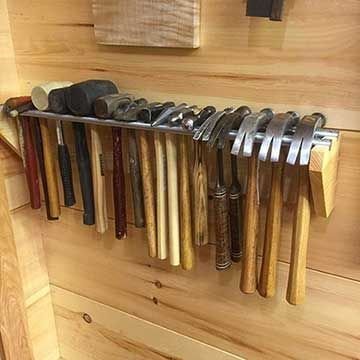Woodworking often involves the creation of intricate shapes and curves, and mastering the art of drawing arcs is essential for any woodworker. In this article, we will delve into the process of how to draw an arc in woodworking, providing you with the knowledge and skills to create smooth and precise curves in your projects.
Drawing arcs in woodworking requires a combination of precision, technique, and the right tools. Whether you are a beginner or a seasoned woodworker, understanding the basics is crucial to achieve professional-looking results. From selecting the appropriate wood for your arcs to marking the starting and ending points accurately, each step plays a vital role in creating flawless curves.
By following our guide on drawing arcs in woodworking, you will learn how to choose the right tools, prepare your workspace, and employ techniques that will help you achieve perfect curves every time. From basic tips for beginners to advanced strategies for experienced woodworkers, this article covers everything you need to know about drawing arcs in woodworking. So let’s dive in and enhance your woodworking skills by mastering the art of creating beautiful arcs in your projects.
Understanding the Basics
Drawing arcs in woodworking requires the right tools to ensure precision and accuracy in your projects. Here are some essential tools needed for drawing arcs effectively:
- Compass: A compass is a must-have tool for drawing perfect arcs of various sizes. It allows you to adjust the radius easily and create consistent curves.
- Flexible Curve Ruler: A flexible curve ruler, also known as a French curve, is ideal for drawing freehand curves and irregular shapes. It can be bent into different angles to create unique arcs.
- Trammel Points: Trammel points consist of two adjustable points connected by a beam, making it great for drawing large or custom-sized arcs. They offer versatility in creating precise curves.
These tools are essential for any woodworker looking to master the art of drawing arcs. By having the right tools at your disposal, you can achieve smooth and accurate curves in your woodworking projects.
Practice using these tools to familiarize yourself with their functionality and capabilities. Experiment with different techniques to see how each tool can help you draw various types of arcs on different types of wood. Mastering the use of these tools will enhance your woodworking skills and take your projects to the next level.
Choosing the Right Wood for Arcs
When it comes to woodworking projects that involve drawing arcs, choosing the right type of wood is essential for achieving the desired result. The characteristics of the wood can greatly affect how smoothly and accurately you are able to draw and cut arcs. Some woods are more suitable for bending and shaping, while others may be too brittle or prone to splintering.
One important factor to consider when selecting wood for drawing arcs is its flexibility. Woods like cedar, cherry, and walnut are known for their pliability and ability to bend without breaking. These types of woods are ideal for creating smooth curves and intricate designs. On the other hand, harder woods like oak or maple may be more challenging to work with when it comes to drawing precise arcs.
In addition to flexibility, the grain pattern of the wood can also impact how well it holds an arc shape. Look for woods with a consistent grain pattern that runs parallel to the direction of the arc you plan to draw. This will help prevent tearout and ensure a clean, professional-looking curve. Experimenting with different types of wood can help you determine which ones are best suited for your specific woodworking project involving arcs.
| Wood Type | Flexibility | Grain Pattern |
|---|---|---|
| Cedar | High | Consistent |
| Oak | Low | Inconsistent |
| Cherry | Medium-High | Parallel |
By carefully considering the properties of different types of wood, you can choose the best material for your woodworking project involving arcs. Remember that practicing on scrap pieces before working on your final project can help you master how to draw an arc in woodworking effectively with the chosen type of wood. With the right selection and technique, you can achieve beautiful, precise curves that enhance the overall quality of your finished piece.
Preparation
When it comes to woodworking projects that involve drawing arcs, proper preparation is key to achieving precise and smooth curves. One of the first steps in preparing to draw an arc is marking the starting and ending points accurately. This step not only ensures that your arc will be symmetrical and well-defined but also contributes to the overall quality of your finished piece.
To mark the starting point of an arc, use a pencil or marking tool to make a small dot on the wood where you want the curve to begin. If you are working with a template or a curved edge, make sure to align it properly before marking the starting point. Similarly, mark the ending point of the arc in the same manner, ensuring that both points correspond correctly to create a uniform curve.
There are several techniques you can use to mark the starting and ending points of an arc, depending on the complexity of your project. You can use a compass for simple curves or templates for more intricate designs. Additionally, measuring tools such as rulers or tape measures can help ensure precision when marking points for larger arcs. Taking the time to accurately mark these points is essential for laying the foundation for a successful woodworking project.
Techniques for Drawing Smooth and Precise Arcs in Woodworking
Drawing smooth and precise arcs in woodworking requires a steady hand, the right tools, and a good understanding of the technique involved. Here are some techniques to help you achieve perfect curves in your woodworking projects:
- Measure and Mark: Before starting to draw an arc, take accurate measurements and mark the starting and ending points on your wood piece. This will serve as a guide for drawing the arc smoothly.
- Using a Compass: One of the simplest tools for drawing arcs in woodworking is a compass. Adjust the compass to the desired radius of the arc and carefully draw it on the wood surface. Make sure to hold the compass steady to maintain consistency.
- Freehand Drawing: For more organic or irregular curves, freehand drawing can be used. Simply sketch out the curve lightly with a pencil and refine it gradually until you achieve the desired shape.
Practicing these techniques will help you become more comfortable with drawing arcs in woodworking projects. Remember to take your time and pay attention to detail to ensure smooth and precise curves in your finished pieces.
Additionally, exploring different methods such as using templates or curved rulers can also aid in creating complex arcs with accuracy. Don’t be afraid to experiment with various techniques to find what works best for you when drawing arcs in woodworking. With practice and patience, you’ll soon master this essential skill in woodworking craftsmanship.
Advanced Tips for Achieving Perfect Curves in Woodworking Projects
When it comes to achieving perfect curves in woodworking projects, there are several advanced tips and techniques that can help you elevate the quality of your work. One crucial aspect to consider is the use of a flexible curve ruler, also known as a contour gauge, which allows you to easily trace and replicate complex curves with precision. By adjusting the shape of the ruler to match the desired curve, you can transfer it onto your wood accurately.
Another advanced tip for achieving perfect curves in woodworking projects is to utilize a fairing batten. This tool consists of a thin strip of flexible material that can be bent into various curves and shapes. By holding the fairing batten against your wood piece and tracing along its edge, you can create smooth and consistent curves. This technique is particularly useful when working on projects that require multiple curved components with identical shapes.
Additionally, experimenting with different cutting techniques can also help you achieve perfect curves in woodworking projects. For instance, using a band saw or jigsaw with a fine-tooth blade can allow for more precise cuts along curved lines. Taking your time and making slow, controlled movements while cutting will help ensure clean and accurate results.
Remember to always practice proper safety precautions when using power tools for woodworking projects involving curved elements. Mastering these advanced tips will enhance your woodworking skills and enable you to create flawless curves in your projects.
Common Mistakes to Avoid When Drawing Arcs in Woodworking
When embarking on woodworking projects that involve drawing arcs, it is crucial to be aware of common mistakes that can hinder the outcome of the final piece. By understanding these pitfalls and learning how to avoid them, woodworkers can ensure that their arcs are smooth, precise, and visually appealing.
Not Using the Right Tools
One of the most common mistakes when drawing arcs in woodworking is using improper tools for the task. To draw accurate and smooth curves, it is essential to have the right tools on hand. Compasses or flexible curve rulers are ideal for creating consistent arcs, while freehand drawing may result in irregular shapes. Investing in quality tools specifically designed for drawing arcs will greatly improve the overall accuracy of your woodworking project.
Incorrect Marking of Starting and Ending Points
Another common mistake to avoid when drawing arcs in woodworking is incorrectly marking the starting and ending points of the arc. Without precise measurements and markings, the curve may end up uneven or disjointed. Take your time to accurately measure and mark the desired arc on your wood surface before making any cuts or shaping. This careful preparation will help ensure that your arc turns out exactly as intended.
Overlooking Sanding and Smoothing Out Arcs
After successfully drawing an arc in a woodworking project, some craftsmen may overlook the importance of sanding and smoothing out the curves. Neglecting this step can result in rough edges or inconsistencies in the shape of the arc. To achieve a professional finish, be sure to sand down any rough spots and use appropriate techniques to smooth out the curves. This final touch will enhance the overall appearance of your woodworking project and showcase your attention to detail.
Finishing Touches
When it comes to woodworking, creating smooth and flawless arcs is essential for achieving a professional look in your projects. Once you have successfully drawn the arc on your wood piece, the next step is to ensure that it is refined and perfected through sanding and smoothing techniques. This final touch will not only enhance the appearance of the arc but also improve its overall quality.
Sanding Essentials
Before you begin the sanding process, make sure you have the necessary tools on hand such as sandpaper in various grits (coarse to fine), a sanding block, or an electric sander for larger projects. Start by smoothing out any rough edges or uneven surfaces on the arc using a coarse-grit sandpaper.
Work your way through finer grits gradually until you achieve a smooth finish. Remember to sand in the direction of the wood grain to avoid causing any scratches or damage to the surface.
Smoothing Out Imperfections
In order to get that perfect curve in woodworking, pay close attention to any imperfections or bumps along the arc. These can be easily addressed by using a rasp, file, or chisel to carefully shave off excess wood and smoothen out any irregularities. Take your time with this step as precision is key in achieving a smooth and polished arc. Once you have achieved your desired shape, continue with sanding to refine the surface further for a flawless finish.
By following these steps and paying attention to detail, you can ensure that your arcs in woodworking projects are not only accurately drawn but also beautifully finished. Taking the time to sand and smooth out imperfections will elevate the overall look of your work and showcase your craftsmanship effectively. Remember, practice makes perfect when it comes to mastering how to draw an arc woodworking.
Conclusion
In conclusion, mastering the art of drawing arcs in woodworking requires patience, practice, and the right tools. By understanding the basics of tools needed for drawing arcs, choosing the right type of wood, and properly marking starting and ending points, you can create smooth and precise curves in your woodworking projects.
One of the key techniques for achieving perfect curves is to take your time and make small adjustments as you draw the arc. This will help ensure that your curve is exactly as you envision it. Additionally, using advanced tips such as creating templates or using a compass can help you achieve even more intricate designs in your woodworking projects.
To add a professional touch to your arcs, don’t forget about finishing touches like sanding and smoothing. This will not only make your arcs look more polished but also ensure that they are free from any rough edges or imperfections. Remember, practice makes perfect when it comes to mastering the art of drawing arcs in woodworking. Keep experimenting with different techniques and materials to see what works best for you.
Frequently Asked Questions
How Do You Draw an Arc Step by Step?
Drawing an arc step by step requires precision and patience. First, determine the radius of the arc you want to draw. Then, place a compass on the paper and adjust it to the desired radius. Next, keeping one end of the compass stable, rotate it to draw the arc smoothly.
How Do You Draw a Curve on Wood?
Drawing a curve on wood involves using a flexible ruler or a French curve tool to create smooth and precise curves. Place the ruler or curve tool on the wood surface where you want the curve to be drawn, then trace along its edge with a pencil or marking tool.
By carefully following the curvature of the ruler or curve tool, you can achieve a clean curve on wood.
What Is the Tool for Drawing an Arc?
The essential tool for drawing arcs is a compass. A compass is made up of two arms – one with a pointed end for piercing into paper, and another with a pencil or pen at its opposite end for drawing circles or arcs.
By adjusting the distance between the two ends, you can control the size of your arc accurately and efficiently.

Hi everyone! I’m a woodworker and blogger, and this is my woodworking blog. In my blog, I share tips and tricks for woodworkers of all skill levels, as well as project ideas that you can try yourself.





